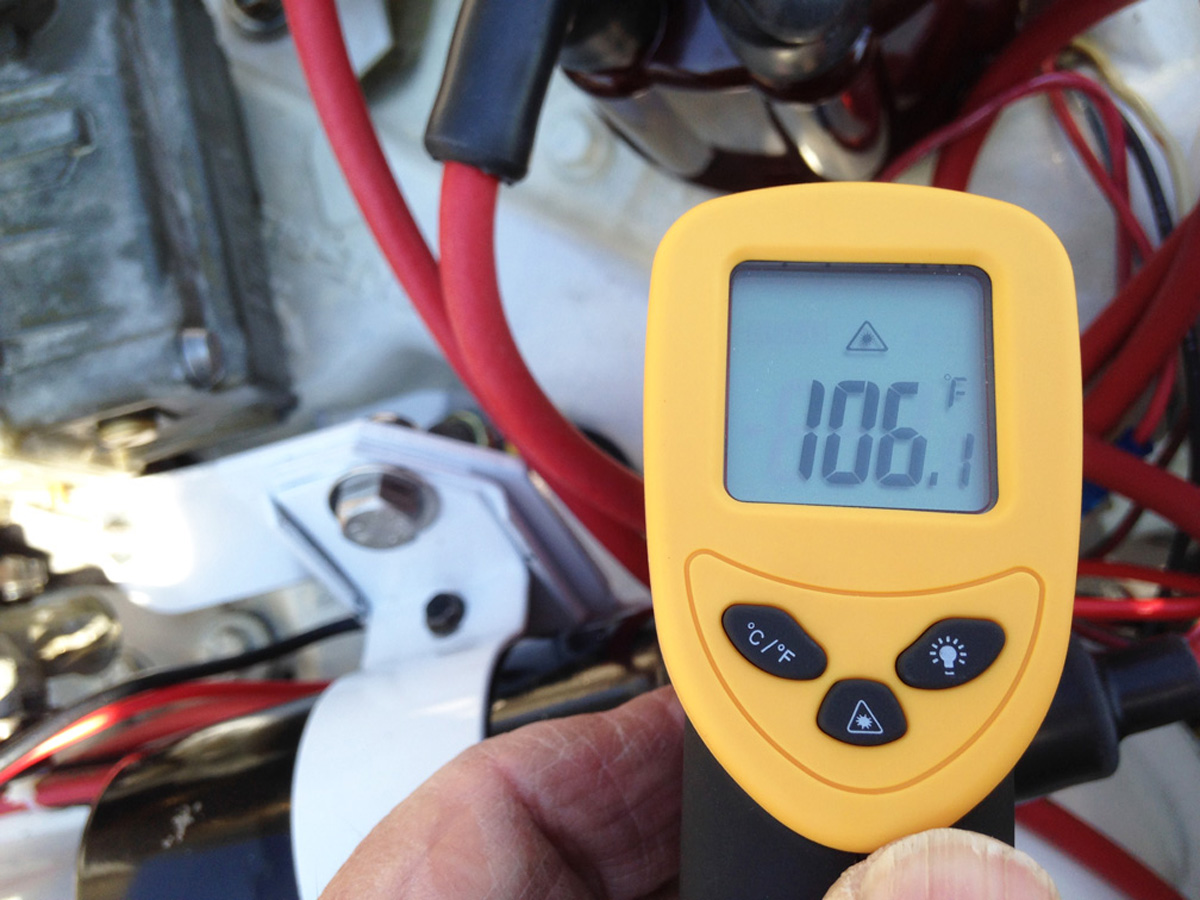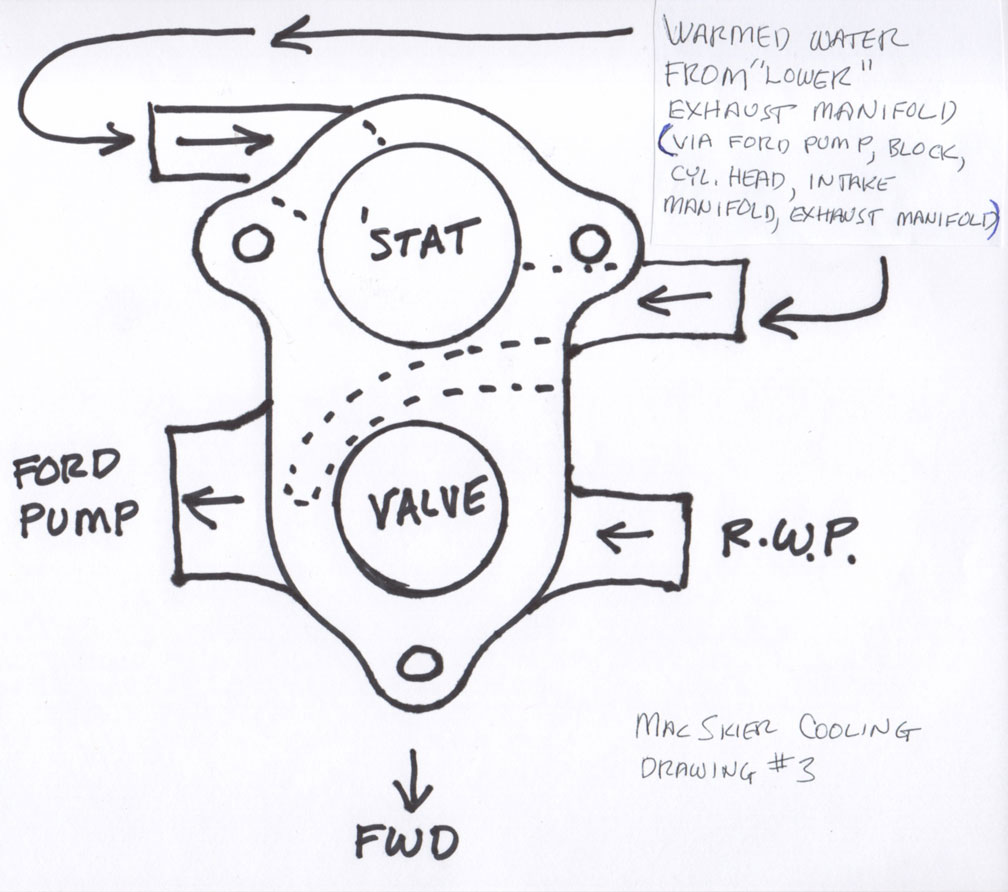|
After installing the rebuilt engine, we experienced very low engine temperatures the first few hours of operation. Cruise to Grafton, and keep your eyes on the temperature gauge:
The temperature gauge and sensor were properly matched, but te gauge's needle hardly moved off the cold peg. The new 160F automotive thermostat was tested on the kitchen stove and functioned properly. Here are some photos of the plumbing as we had the hoses connected. (We thought we had them arranged the way they were before the engine was removed for rebuild, but that was not the case. As it turns out, the error was minor, only reversing the flow through the "lower" exhaust manifold chambers.)
Drawing from the PCM manual (with shut-off in pickup hose, one pickup, engine oil cooler and other inaccuracies):
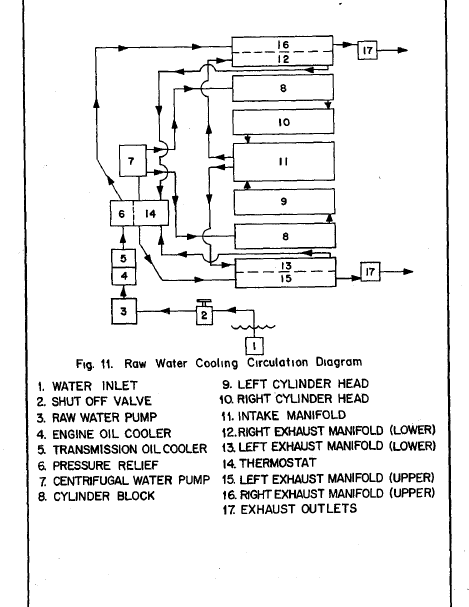
Don't bother clicking above for larger image. Ken wrote: About those two hull intakes, the CCF explanation of that is that the Chryslers back then had 2 intakes and I think 2 pumps or 2 T'stats also. They had a cooling system that makes yours look simple, it was crazy. Don't know anything about them. The story seems to be that they just made all the boats with 2 intakes whether they were getting a Chrysler or something else. Anyway, here are my drawings of the "correct" set up. (I should have seen the obvious error -- we (and the PO) had water trying to flow from the bottom rear of the exhaust manifolds TO the front of the rather than TO the thermostat housing. DUH!) 4/11/16 -- We connected everything as per the following revised drawings, and still have cold temperatures. -- Colder than experienced earlier -- except for the top of the exhaust manifolds. They were HOT! (250F) We are currently stumped.
Revised drawing #1.
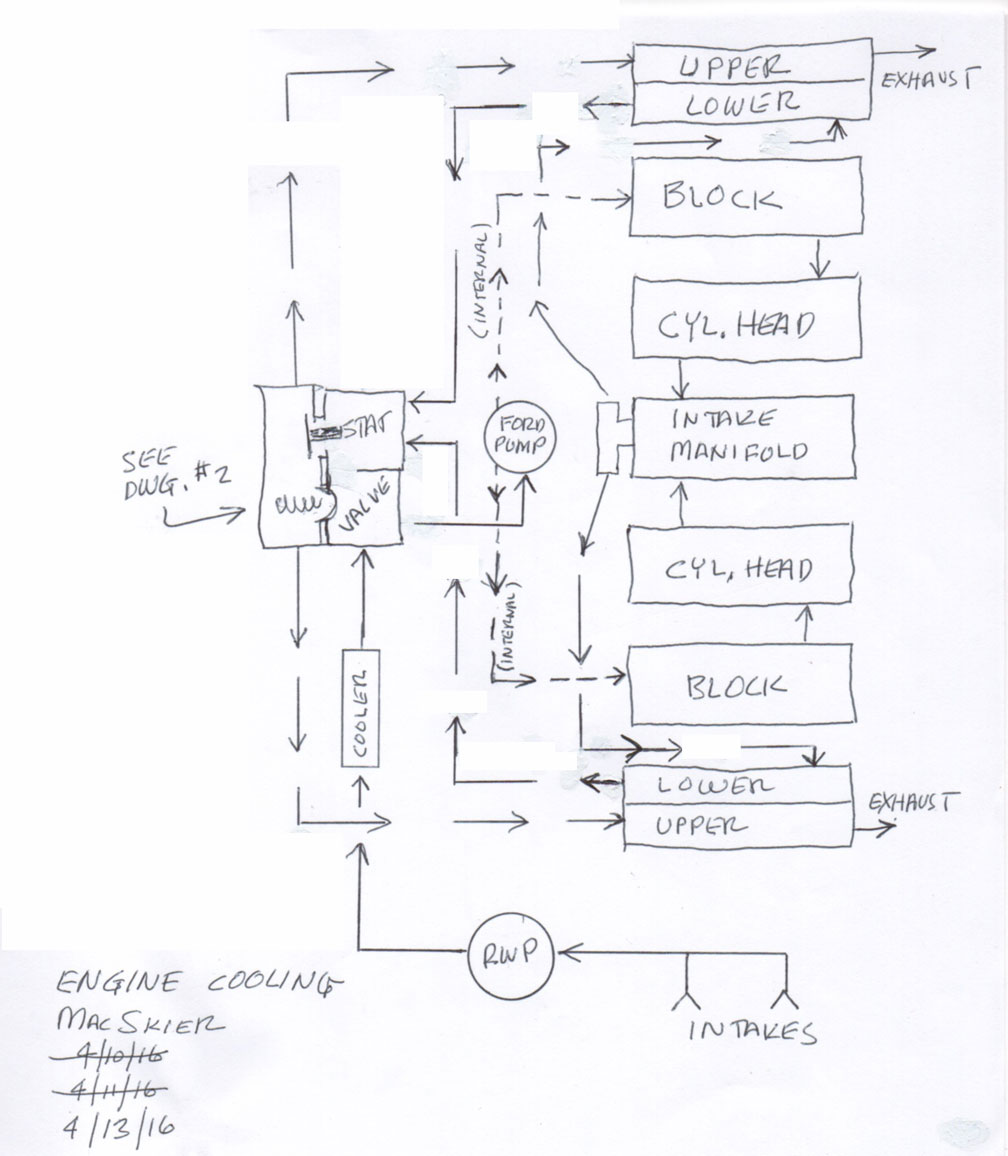
Click above for larger image.
Revised drawing #2
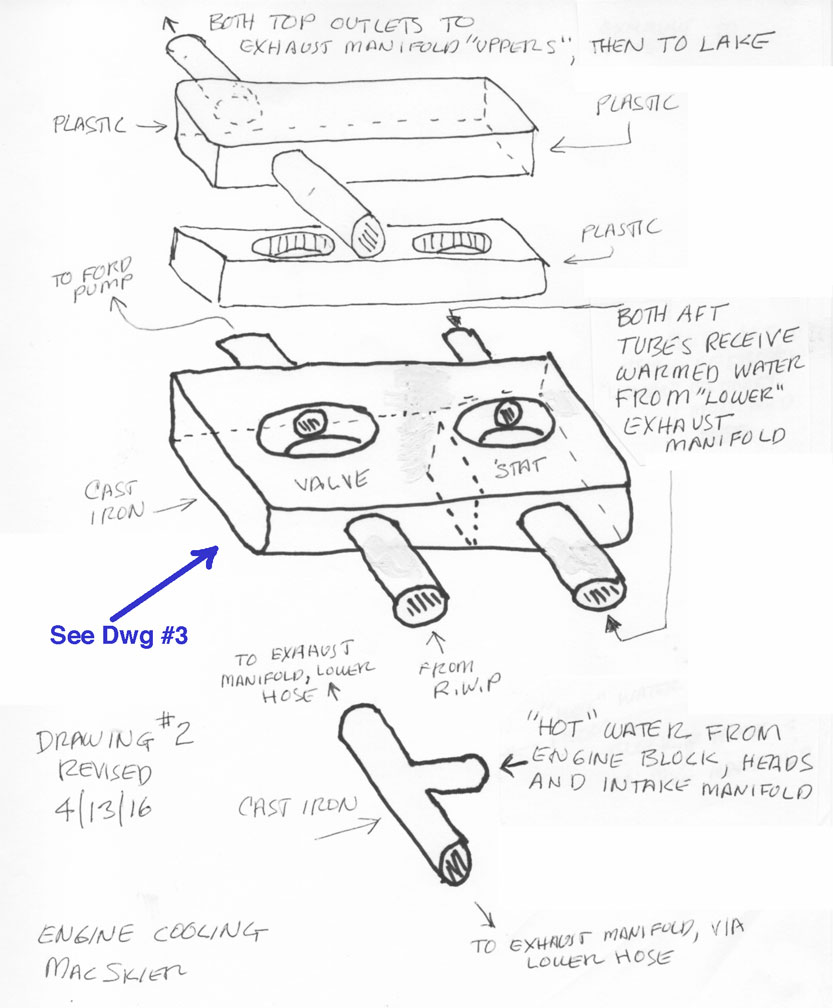
Click above for larger image. Drawing #3 -- showing interior configuration of thermostat and pressure relief valve housing.
Check out these photos of the contraption we call the thermostat housing:
Top of the four-part contraption, view #2
Top lifted off
Top & "middle piece" lifted off
Did the boat HAVE a thermostat?
The plugs looked pretty good:
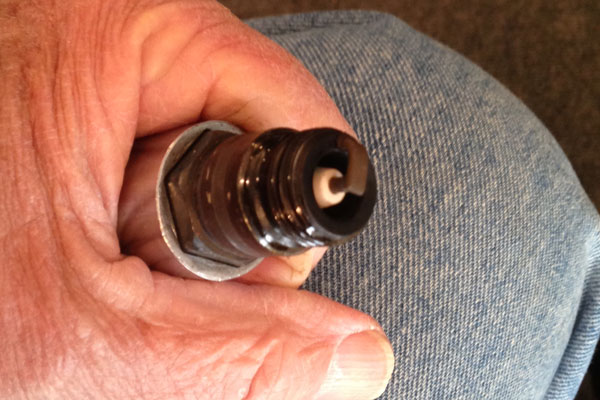 _ _ _ _ _ _

Click above for larger images.
|
